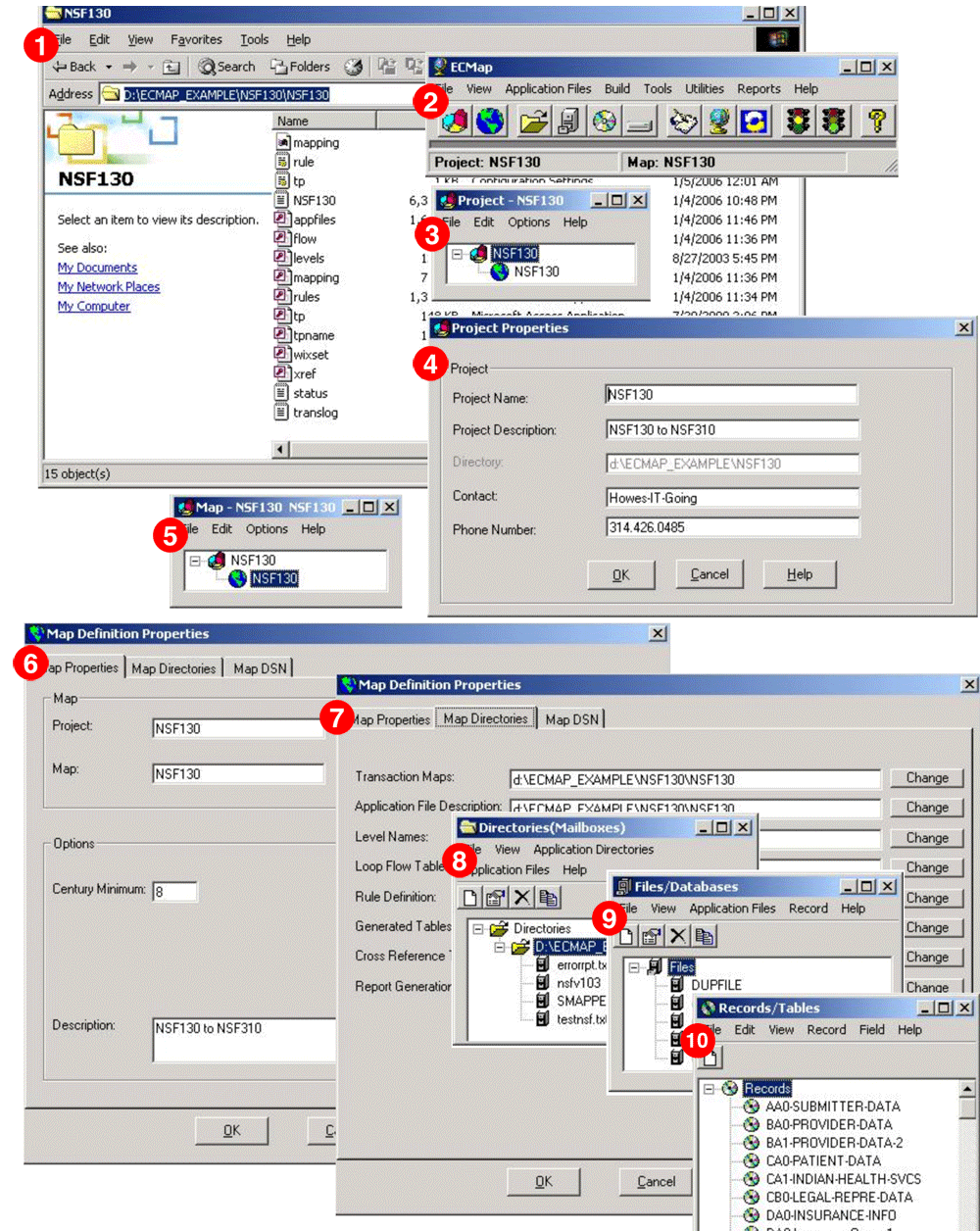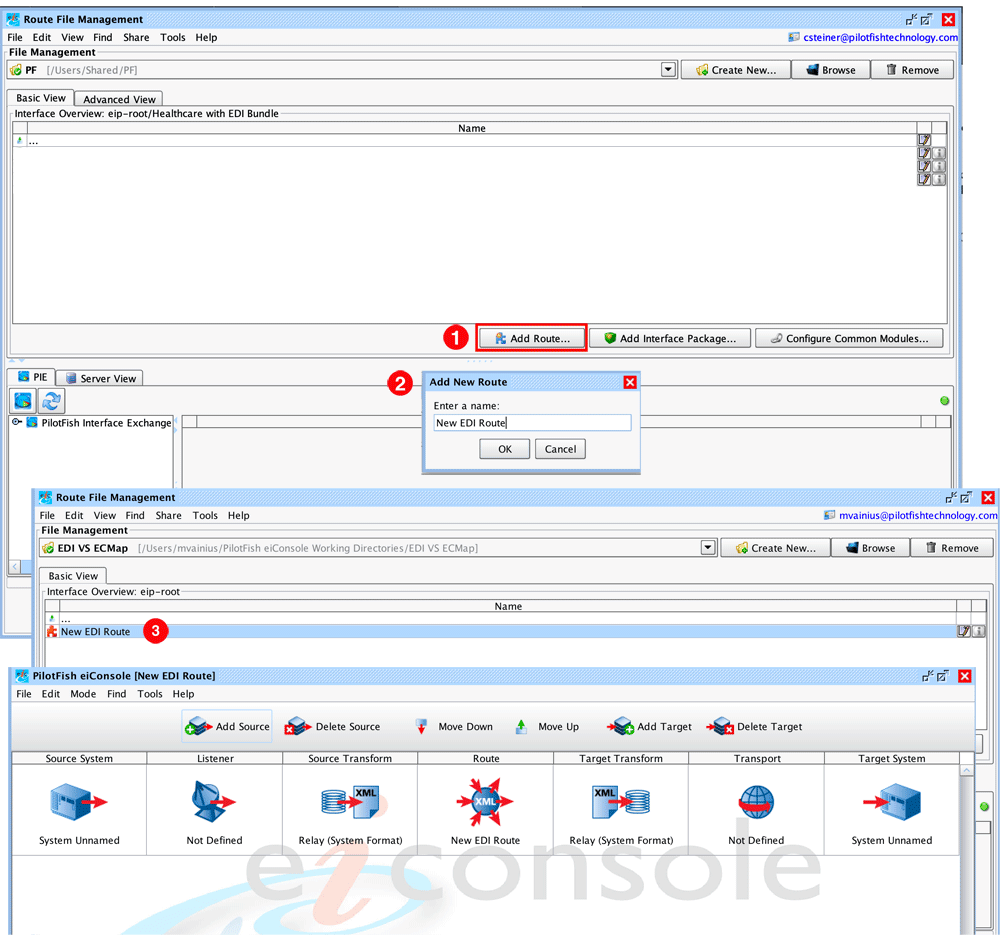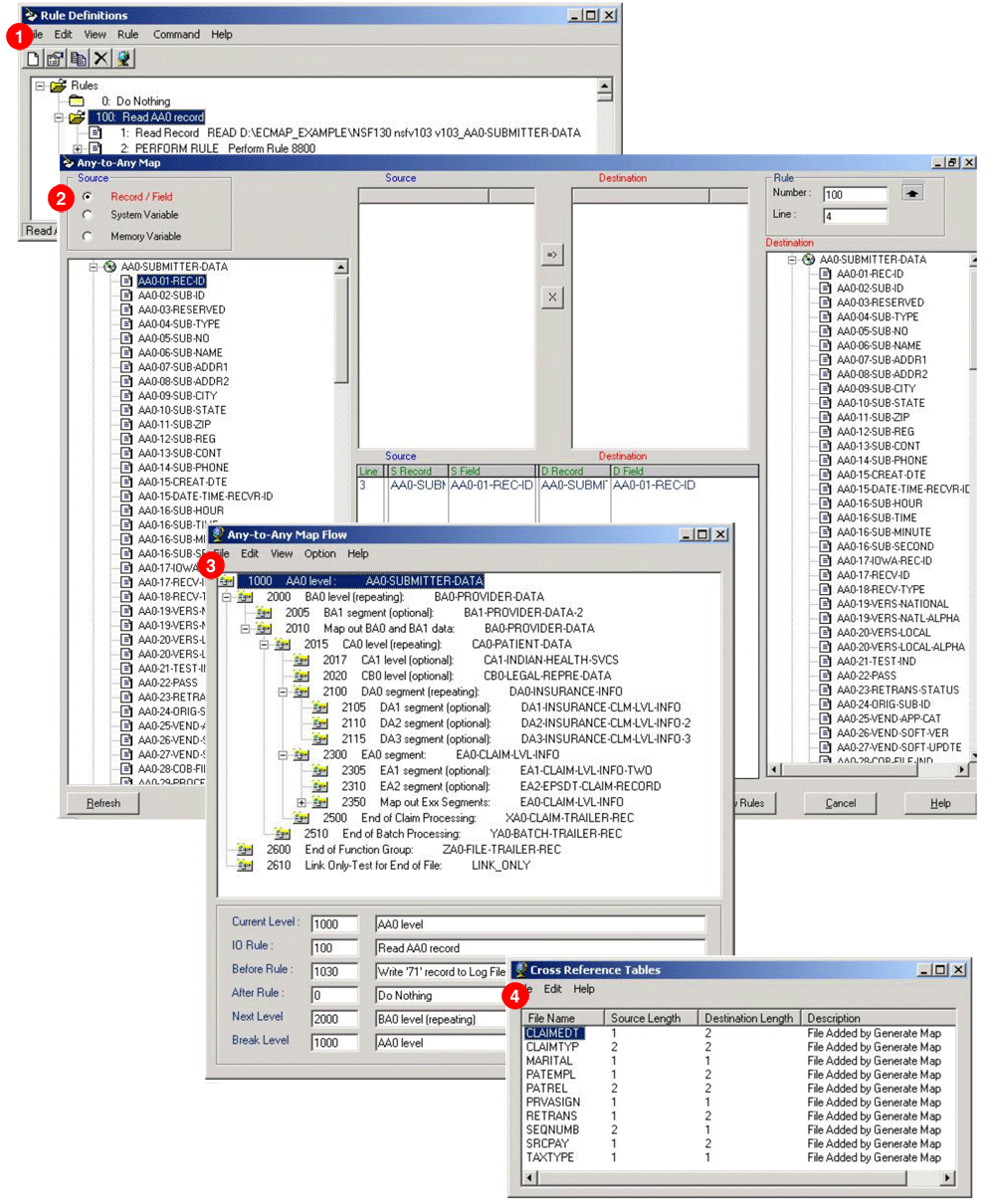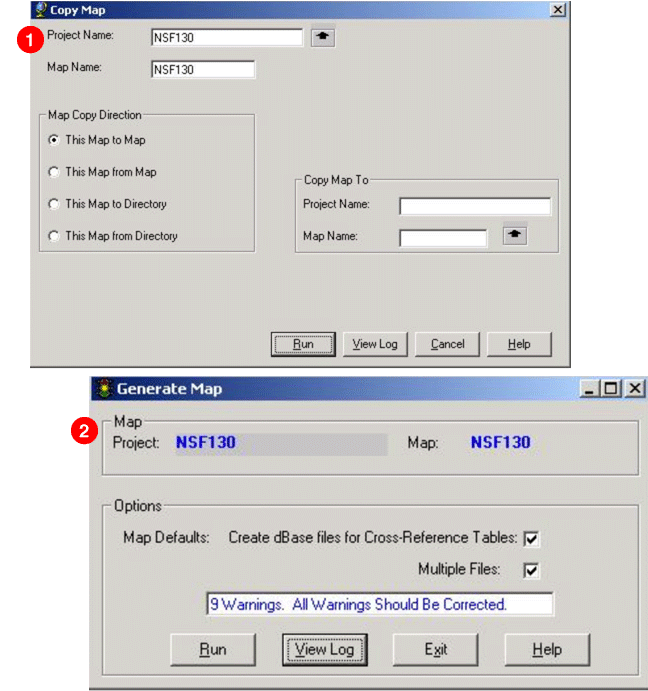ECMap vs. PilotFish Show & Tell
How does PilotFish really stand up in comparison to ECMap? In short, PilotFish eliminates most of the highly manual processes and makes EDI mapping and integration far easier and simpler.
By offering the user an IDE with a graphical automated assembly line (eiConsole), PilotFish provides an easy and repeatable process for any integration requirement – no matter how simple or complex. With PilotFish, the user has far fewer steps to follow than it takes to accomplish the same thing in ECMap. PilotFish also offers a complete integrated development environment with graphically configurable components to build, map and test your interfaces instead of the manual processes you need to follow or non-existent components in ECMap. With PilotFish, even non-developers can heavily participate in EDI interface development, mapping, testing, maintenance and management.
Let’s take a closer look.
In ECMap, in order to set up a new Route – the user needs to go through 10 steps (Figure A, Steps 1-10). The user also has to create their project directory manually and then make the project in ECMap filling in all the file paths. They then have to start configuration, defining and recording definitions.
In contrast, to do the same thing using PilotFish – the user has 3 steps (Figure B). The user opens PilotFish’s IDE (the eiConsole application), clicks “Add New Route” (1), types in a name for their route (2), double-clicks the route (3) and automatically the route opens ready for configuration. In the background, PilotFish creates the necessary files and directories without any additional user input.
ECMap Process for Creating a New Route

PilotFish Process for Creating a New Route

ECMap vs. PilotFish Data Mapping
Building data mappings is a tedious process in ECMap. Mapping a single field requires navigating through a series of screens to define data types, input and output rule definitions, flow definitions and any additional special handling (Figure C, Steps 1-4 below). A mapping for a typical EDI message contains thousands of these rules with little reusability between fields.
In ECMap, Testing is also tedious since the entire mapping must be compiled before any warning or error information is available. Editing and debugging even a single field can take hours in a production-level mapping since there’s no mechanism to test as you build.
ECMap Data Mapping Process

PilotFish takes a completely different approach to Data Mapping (Figure D). In PilotFish, the user is presented with a graphical 3-panel drag & drop tool (1). The source is on the left, and the target is on the right. Users create a mapping by simply dragging source and target fields into the middle panel. As you create your mapping, no matter how complex, it can be viewed in the center panel by simply scrolling up or down. Complex mappings just get longer.
A built-in EDI Format Reader (2) lets the reader instantly read in X12 data (and over a dozen other formats). PilotFish also offers additional EDI specific features that make the tool easier to use for those less familiar with X12 EDI data. For example, the Friendly Names feature provides human-readable segment, field and code descriptions inline. The Lenient parser allows a user to easily normalize unknown complex industry standard formats right within the data mapper. Where available and licensed, PilotFish includes inline documentation for EDI as well.
With PilotFish, users never have to rely on coding to create conditional logic in their mappings. They can choose from the palette of XSLT structures and functions (located at the top of the center panel) to create “for each” statements and “concatenation” as well as dozens of other functions.
To use them, users need only to select each from the palette and drag it onto their mapping – providing additional parameters, if necessary. Underneath the Data Mapper’s graphical view, it generates W3C compliant XSLT. Users have the option of working in the graphical or code view by simply toggling back and forth between the tabs at the bottom of the screen, all in real time.
The PilotFish data mapper’s productivity-boosting advantages don’t stop there. At the bottom of the window, there is a third tab for testing. In the fully featured testing mode (3), a user can simply load in sample data and click a button to run a test and correct any errors – all without leaving the data mapper.
PilotFish Data Mapper

ECMap vs. PilotFish Testing
After you have built your interface, the next critical step before deployment is testing. ECMap offers limited testing options. As shown in Figure E, you can compile the ECMap (1) and fix any warnings (2). That’s it.
ECMap Testing

PilotFish, on the other hand, offers a complete automated graphical testing component (Figure F). Users can perform end-to-end testing and debugging directly within the application. There’s no extra hardware and no “wait time” for compilation. Users benefit from full error logging and detail. With PilotFish, they can start and stop their test at any stage and view the output at any stage.
PilotFish Route Testing & Validation

ECMap vs. PilotFish Deployment
ECMap, like PilotFish, has a headless runtime engine – eiConsole. However, unlike PilotFish, ECMap does not offer any automated deployment processes. In contrast, PilotFish offers several deployment options. Users can copy the configuration files that have been generated and are in their Working Directory. They can connect to the PilotFish eiPlatform server and drag & drop into an eiPlatform panel, or they can use PilotFish’s optional eiDashboard web application.
We invite you to take a Test Drive and download a FREE 90-Day Trial of the PilotFish eiConsole for X12 EDI.
For more information, please call us at 813 864 8662 or click the link below.

